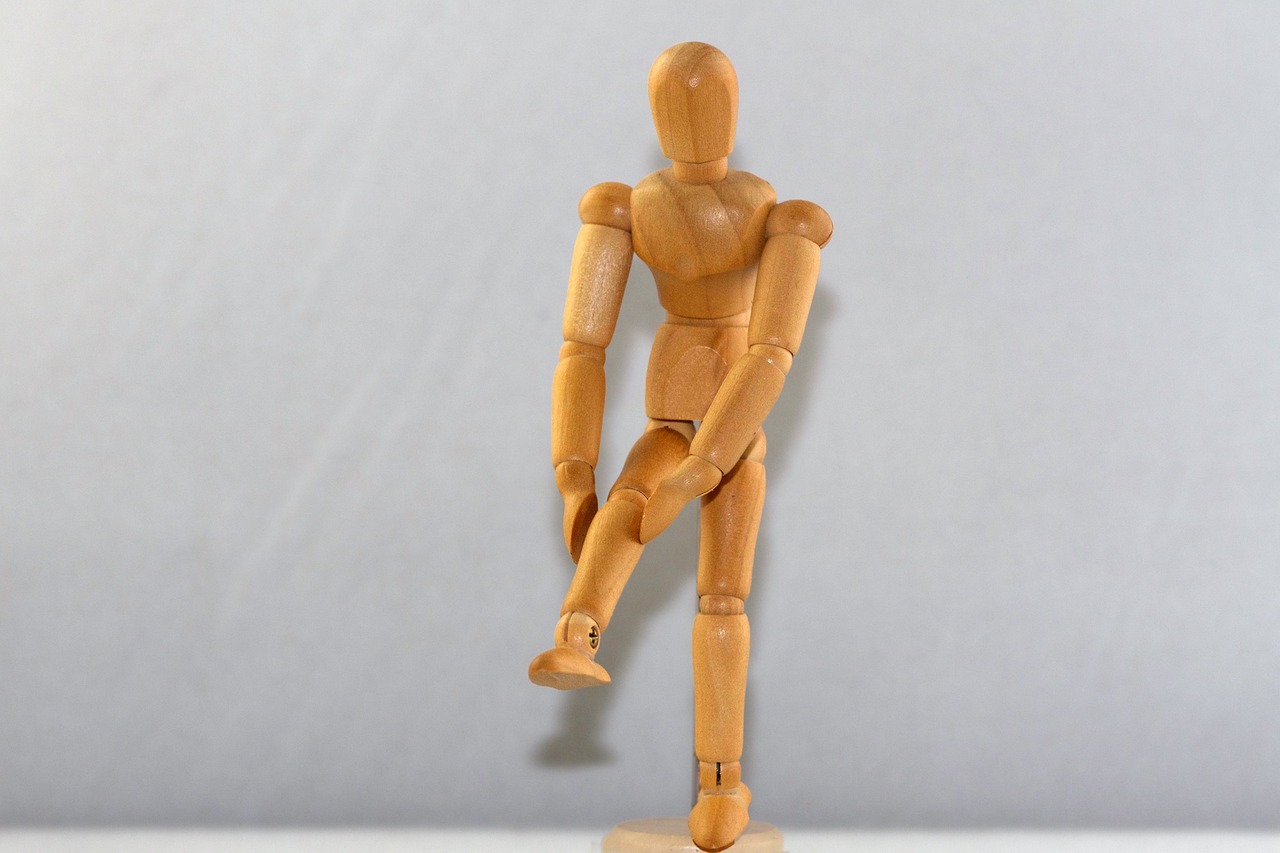The connection between weather and joint pain has long intrigued researchers and troubled individuals with arthritis. While the exact mechanism is not fully understood, studies have provided important insights into this phenomenon and the results of studies have been incredibly mixed.
Some studies seem to show humidity and temperature effect most types of arthritis whilst other and in many cases larger studies have shown no statistical difference.
Onto The Studies of Arthritis And The Cold
One such study, conducted in the UK in 2019, analyzed data from over 2,600 participants who recorded their symptoms and location using smartphones. The study found a modest yet significant correlation between pain and three weather components: relative humidity, air pressure, and wind speed. Surprisingly, temperature did not show a significant association with pain in this particular study[1]. Although in the UK weather fluctuations are common, but the island has relatively mild seasons meaning that changes culd be less drastic, which could be one reason for less percieved difference.
However, earlier studies have suggested that temperature does play a role in arthritis pain. For example, a study published in 2015 examined the impact of temperature and humidity on joint pain in individuals with osteoarthritis (OA). The results indicated that both daily average humidity and temperature had a significant effect on joint pain, with humidity having a stronger impact in colder weather conditions[2]. Similarly, a separate study conducted in 2007 found that knee pain in individuals with knee OA increased with every 10-degree drop in temperature[3].
Older studies were also pretty mixed
A study published in the Proceedings of the National Academy of Sciences in 1996 examined the perception of arthritis pain in relation to weather conditions. The researchers hypothesized that people tend to perceive patterns where none exist, leading to the belief that arthritis pain is influenced by the weather. They studied a group of patients over the course of a year and found no statistically significant associations between their arthritis pain and the weather conditions implicated by each individual.
However, a study published in the Annals of Rheumatic Diseases in 1990 aimed to assess the impact of weather conditions on rheumatic patients. The researchers found that weather changes increased arthritic symptoms in most patients, with women being more sensitive to weather than men. Pain was positively affected by barometric pressure and temperature in rheumatoid arthritis (RA) patients, temperature, rain, and barometric pressure in osteoarthritis (OA) patients, and barometric pressure in fibromyalgia patients.
Does the cold make rheumatoid arthritis worse?
The effects of temperature on arthritis symptoms are not limited to OA. Patients with rheumatoid arthritis (RA) have also been found to experience increased pain in colder temperatures. A Spanish study conducted in 2013 analyzed emergency room visits by RA patients and discovered that lower mean temperatures were associated with a 16% higher likelihood of experiencing a flare[4]. Another study conducted in China in 2021 found a significant association between low temperatures and hospital admissions for RA[5].
Conversely, warmer temperatures have been linked to the worsening of symptoms in certain types of arthritis. A study published in the American Journal of Epidemiology in 2014 found that higher temperatures were associated with a higher risk of gout attacks[6]. Similarly, individuals with lupus may experience joint complaints, rashes, and inflammation of the membrane surrounding the heart and lungs when exposed to increased temperatures[7].
Seasonal fluctuations have also been observed to impact arthritis symptoms. For instance, gout has been found to develop significantly more in the spring, between March and July, when temperatures are rising. In the case of rheumatoid arthritis, disease activity tends to be higher in the spring and lower in the fall[8]. However, the specific climatic changes that contribute to these patterns remain unclear, although with these seasons being less extreme it could theoretically line up with the results from the UK that ultimately milder weather could be better.
The Bendigo Study: Exploring the Relationship
To further investigate the potential connection between arthritis and weather, a study conducted in the Australian city of Bendigo focused on the impact of various meteorological variables on pain and rigidity levels in arthritis patients. The study included 25 participants with osteoarthritis and/or rheumatoid arthritis who scored their pain and rigidity levels four times per day for one month in each season. [9]
The researchers found that mean pain and rigidity scores were correlated with meteorological data, particularly temperature and relative humidity. The correlations between mean symptoms and these weather variables were statistically significant. Furthermore, stepwise multiple regression analysis revealed that meteorological variables and time of day accounted for a significant portion of the variance in mean pain and rigidity.
Interestingly, a post-study telephone questionnaire indicated that 92% of the participants perceived their symptoms to be influenced by the weather, and 48% claimed to be able to predict the weather based on their symptoms. These findings suggest that decreased temperature is associated with increased pain and rigidity, while increased relative humidity is associated with increased pain and rigidity in arthritis sufferers.
The Psychological Aspect of Arthritis and Weather
Beyond the physiological aspects, there may be a psychological component to the perceived relationship between arthritis and weather. The human mind has a natural tendency to seek patterns and associations, even when they may not exist. This phenomenon, known as illusory correlation, could contribute to the belief that arthritis symptoms are influenced by the weather, despite the lack of consistent scientific evidence.
A study published in the Journal of Abnormal Psychology in 1969 highlighted the role of illusory correlation in hindering the use of valid psychodiagnostic signs. The researchers found that people tend to associate unrelated factors, such as weather conditions and symptoms, based on subjective impressions rather than objective data. This departure from statistical concepts of association can lead to the formation of false beliefs, including the perceived connection between arthritis and weather.
Understanding How Weather Affects Arthritis
While the research provides some insight into the connection between weather and arthritis, the exact mechanisms behind this phenomenon are not yet fully understood. Several possible explanations have been proposed:
Thickening of Synovial Fluid - Lower temperatures may lead to the thickening of the synovial fluid, which lubricates the joints. This thickening could potentially contribute to joint pain and stiffness[10].
Barometric Pressure - Changes in barometric pressure may affect the bones and connective tissue in our bodies, similar to how structures in our homes expand or contract in response to atmospheric pressure. Some studies have suggested that barometric pressure can influence joint pressure[11].
Psychological Factors -Cloudy or rainy days may lead to a lower mood, which can cause individuals to focus more on their pain.
Reduced Physical Activity - Cold and rainy days may discourage individuals from being active, leading to increased joint pain and stiffness. Lack of physical activity is known to worsen arthritis symptoms.
It is essential to note that the impact of weather on arthritis can vary between individuals and different forms of the condition. What works for one person may not work for another. Therefore, it is crucial to consider personal experiences and consult with healthcare providers when making decisions about managing arthritis symptoms.
Is There an Ideal Climate for Arthritis?
Based on the available research, it appears that a warmer and drier climate may be more beneficial for most individuals with arthritis. Regions such as Texas, Arizona, Nevada, and the Eastern Sierra region of California are often considered optimal due to their favorable weather conditions. However, it is important to note that there are no absolutes when it comes to finding the best climate for arthritis. Moving to a different climate does not guarantee relief from symptoms, and individuals should carefully weigh the potential benefits against the sacrifices and challenges of relocating.
If you are considering a move to a different climate, it is advisable to visit the area at different times of the year to assess how your symptoms may be affected. Keep in mind that other factors, such as job opportunities, access to medical care, social support, and personal preferences, should also be considered when making such a decision. Ultimately, the goal is to strike a balance between finding a climate that may alleviate symptoms and maintaining a fulfilling and supportive lifestyle.
References
1 - https://www.ncbi.nlm.nih.gov/pmc/articles/PMC10120534/
2 - https://www.ncbi.nlm.nih.gov/pmc/articles/PMC8638190/
3 - https://www.ncbi.nlm.nih.gov/pmc/articles/PMC8790907/
4 - https://pubmed.ncbi.nlm.nih.gov/23829960/
5 - https://www.ncbi.nlm.nih.gov/pmc/articles/PMC8557265/
6 - https://www.ncbi.nlm.nih.gov/pmc/articles/PMC4184385/
7 - https://www.ncbi.nlm.nih.gov/pmc/articles/PMC7045928/
8 - https://www.ncbi.nlm.nih.gov/pmc/articles/PMC6339394/
9 - https://pubmed.ncbi.nlm.nih.gov/9225595/
10 - https://www.ncbi.nlm.nih.gov/pmc/articles/PMC3967437/
11 - https://pubmed.ncbi.nlm.nih.gov/17466654/




